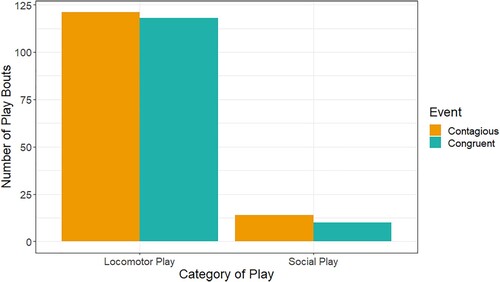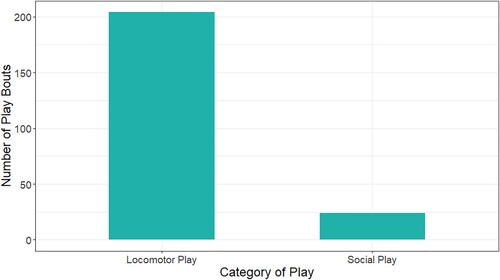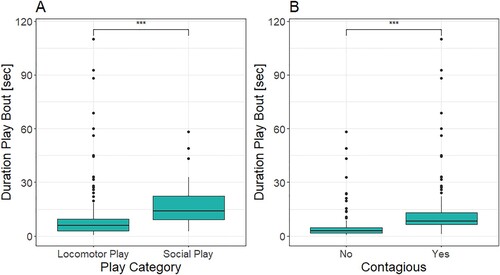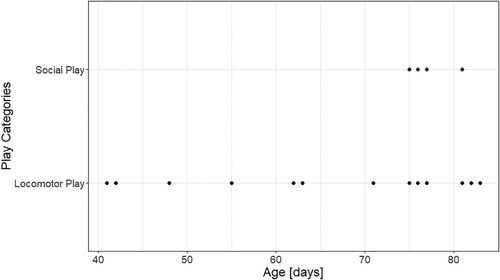Figures & data
Figure 1. Play behaviors in juvenile greater rheas. (A) A group of juveniles play running. (B) Wing display. (C) Leaping. (D) Wrestling. (E) Neck swinging.

Table 1. Descriptive statistics of recorded play bouts.
Figure 4. Number of contagious play bouts of locomotor and social play compared to the number of bouts eliciting the same category of play in conspecifics. Of 118 contagious locomotor play bouts, 115 elicited locomotor play in others (97%). Of 14 contagious social play bouts, 10 elicited the same category in conspecifics (71%).




